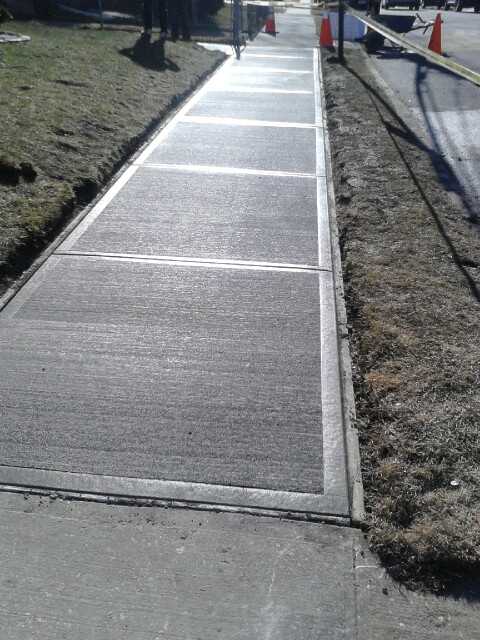What is a sidewalk violation?
A sidewalk violation is an official notice issued by DOT stating that your sidewalk is defective. There is no fine associated with a violation. A copy of the notice is filed with the County Clerk and remains on file until the Clerk receives official notification from the City that satisfactory repairs have been made. A violation can complicate selling or refinancing your property.
The City issues sidewalk violations in order to encourage property owners to repair their sidewalks to enhance public safety. Property owners are encouraged to perform repairs to their sidewalks before a condition becomes a defect which would give rise to a violation. Upon failure of a property owner to remedy the sidewalk defect cited in a violation issued by DOT after an inspection, DOT may perform the work or hire a contractor to perform the work and the Department of Finance will bill the property owner pursuant to Section 19-152 of the New York Administrative Code.
If you do not perform repairs within 45 days, DOT may perform the work or hire a contractor to perform the work and the Department of Finance will bill the property owner.
Examples of Sidewalk Violations
Collapsed Sidewalk

Trip Hazard

Hardware Trip Hazard

Tree Roots

Improper Slope

Patchwork

How do I correct a sidewalk violation?
Hire an Experienced Contractor (Biordi Concrete)
Biordi Concrete is a is the premier service provider for a variety of important services, including New York City sidewalk repairs. Anyone who is familiar with the NYC area knows how important our sidewalks are here. They are just as important as our roadways, if not more so.
Addressing the need for sidewalk repairs in New York City must be handled in a prompt and professional manner, and in strict accordance with industry codes and guidelines.
Much of the work that we do is the direct results of a notice of violation from the Department of Transportation (DOT.) If you have received a notice of violation, you must perform repairs within 45 days. if not, DOT may perform the work or hire a contractor to perform the work and the Department of Finance (DOF) will bill the property owner.

18-30 130th Street
College Point, NY 11356
(718) 357-6500
Fax: (718) 357-6501
[email protected]
Instagram: @BiordiConcrete_
Facebook: @BiordiConcrete

What are the risks of having open sidewalk violations on a building?
The DOT has stated that if repairs are not made within the required timeframe (45 days), they may perform repair work themselves or bid the work to an approved contractor.
The cost of the work will then be added to the lot’s property taxes, and become a lien if unpaid. Failing to satisfy these violations may also result in difficulty during a property transaction or refinance. An owner may also be held liable if anyone injures themselves on the unrepaired sidewalk.
Contesting a Violation
Incorrect Owner
Violations may occasionally be issued to an incorrect property. Match the preliminary inspection report with your property. Check the width and other dimensions of the property. Check the locations trees, signs, utility caps, cellar doors or other features. If it still appears that it is not your property, visit 311 Online and request a Sidewalk Violation Search.
Requesting a Re-Inspection
If you look at your property and don’t find the marked defects, you may request a re-inspection within 45 days of receiving your Notice of Violation. For a re-inspection, visit 311 Online and request a Sidewalk Violation Re-inspection.
A re-inspection is a second inspection of the sidewalk by a different inspector who does not have access to the report made by the first inspector. You will be notified by mail at least five days before the re-inspection date. Inspectors will not come to your door as they are prohibited from seeking out property owners when conducting re-inspections. This is your final inspection. The results of the re-inspection will be mailed to you.
![]()